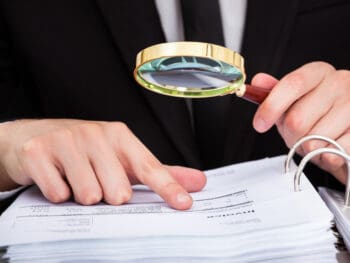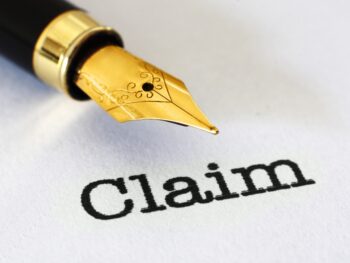In a perfect world, everyone is held accountable for their actions. Not only in life outside of work, but inside of work as well.
When it comes to work, oftentimes there is a lack of accountability. Instead of being responsible, everyone points the finger at everyone else. For example, if a worker sustains an eye injury for not wearing safety glasses, the employee blames something else other than themselves. They say that the safety glasses are uncomfortable and not clear. Or they are heavy and not really feasible for some sort of machine inspection job they may have. The supervisor just blames the employee for not listening to safety protocol. Upper management blames the employee, again for not listening. Somehow the supervisor gets skipped over.
Click Link to Access Free PDF Download
“How Do I Get My Adjusters To Follow My Account Handling Instructions?”
Supervisor Often Skirts The Blame Of Employee Injury
But the real blame is indeed the supervisor. Sure, the employee is the one not wearing the glasses, but, had the supervisor been doing their job the injury would not have happened. Now I can sympathize that a supervisor on a job floor probably has more tasks than just walking around and making sure everyone has their safety equipment on. But, it is also the supervisor’s main job to enforce the rules to the employees they are in charge of. The supervisor is the one that has to drill it in to the heads of the workers that glasses are a part of daily life in a machine shop, and there has to be punishment for those employees that do not want to listen.
Most times when these types of injuries happen it is with a block-headed employee that was warned before to wear glasses and not take them off. The first few times they were caught, nothing was done. The blame has to go to that supervisor. If the supervisor is having a hard time enforcing rules, then that person probably shouldn’t be a supervisor. If the employee was warned and disciplined and still will not listen, get rid of them and get another employee.
Injuries like this are behavioral in nature. Workers do not want to do something, so they do not do it. When they are caught violating a safety rule, little to nothing is done, until an injury eventually occurs. But if the injury happens and no punishment is laid out for either the worker or the supervisor, what was really learned? The answer is nothing. This person was not made an example of what can happen, and work goes on like nothing happed. In my opinion, both the supervisor and the injured worker should face some sort of discipline.
Safety Enforcement Has To Be Done
This is where your safety team has to have protocol as well. Simple safety enforcement has to be done. If you walk down on the job floor and catch people cutting corners on safety, then something has to be done. The easy way out is to just shake your head and say “Boy I hope that person doesn’t get hurt” but they will eventually. You know it is going to happen; it is just a matter of time. Hopefully it doesn’t result in someone losing an eye, or worse, but eventually it will. Maybe not today or this month, but it will happen. When that disaster happens, workers might straighten up for little while but they will fall in to old habits quickly and go on like nothing ever happened. This is because the supervisor failed to do their job enforcing safety protocol.
Transition this to a claims examiner atmosphere. The adjuster fails to make reserve changes on time, or fails to dispute a questionable claim for whatever reason. Instead of being disciplined, or retrained, little to nothing is done other than the supervisor keeping a closer eye on that adjuster. Over time that close eye will focus elsewhere, and that same adjuster is out there making the same mistakes because nothing was ever done. They are not retrained, or perhaps helped in some capacity. Instead the ball keeps rolling forward.
Action Plan To Correct Mistakes Needs to Be Implemented
This adjuster will make these same mistakes again, until finally the adjuster blows a high exposure claim. This is the equivalent of losing an eye for not wearing safety glasses. The adjuster will make enough mistakes to get the attention of some other higher-up types of management. But then who is held accountable? It will most likely skip over the supervisor and just go to the adjuster.
This is the pivotal key, that little to nothing will be done. You may take some reserve authority away, and keep a close eye on them while reviewing their files, but it is the behavior of the adjuster that needed to be changed. Why did this mistake happen, and what can you do to keep it from happening again? Does it come down to training? Is the adjuster overwhelmed and just not spending adequate time on the claim? Is the adjuster not experienced enough to be handling these higher exposure claims?
The answer could be anything, but the responsible party is the supervisor. They are the ones that are supposed to be reviewing claims for potential errors that are passed on as leakage to the employer or the carrier. The sad fact is that some managers out there are really bad at being a manager.
So it doesn’t matter what type of job you are in. You could be a welder, an adjuster, a secretary, etc. The supervisor is the one that has to drill home how the job has to be done, day in and day out. If this is not being done, and the supervisor is not being held accountable for their team, then it is time to find a new manager. If the manager has made several attempts at correcting the behavior and the worker will not listen, it is time to find a new worker, before someone loses an eye.
Author Michael B. Stack, CPA, Director of Operations, Amaxx Risk Solutions, Inc. is an expert in employer communication systems and part of the Amaxx team helping companies reduce their workers compensation costs by 20% to 50%. He is a writer, speaker, and website publisher. www.reduceyourworkerscomp.com. Contact: mstack@reduceyourworkerscomp.com.
©2013 Amaxx Risk Solutions, Inc. All rights reserved under International Copyright Law.













